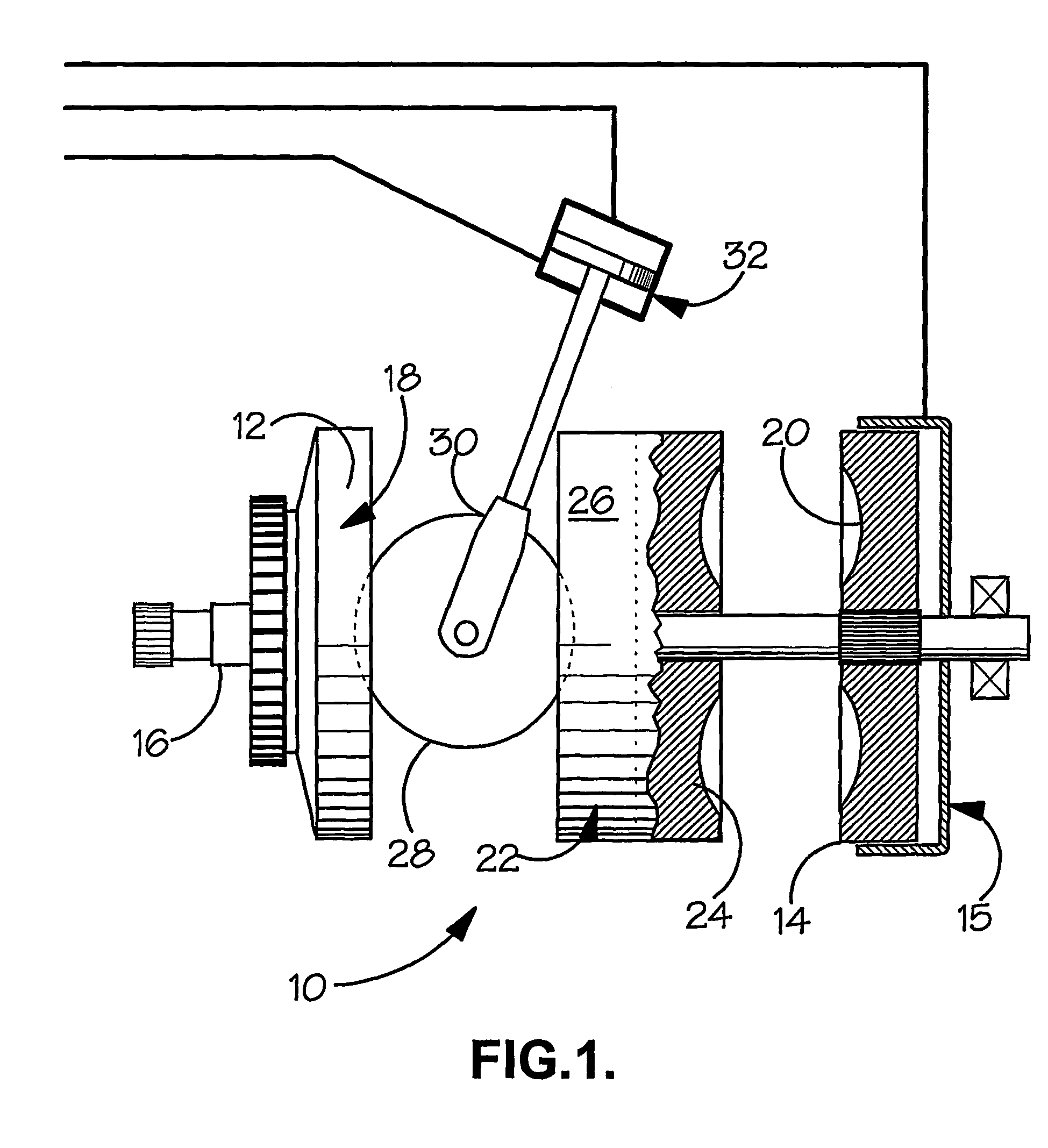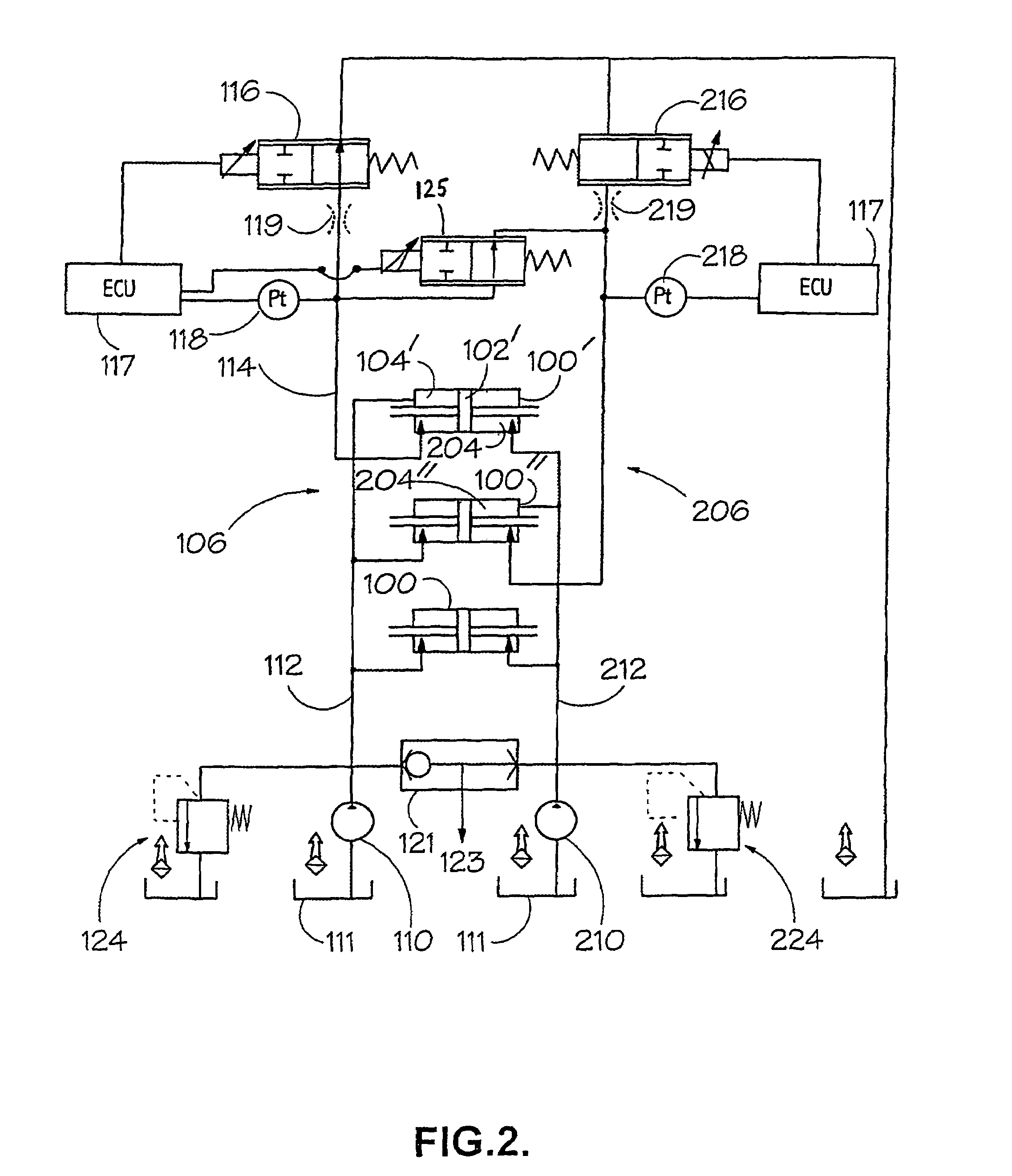Hydraulic control circuit for a continuously variable transmission
a technology of hydraulic control circuit and continuously variable transmission, which is applied in the direction of friction gearing, gearing elements, gearing, etc., can solve the problems of rollers not moving with sufficient speed, affecting the transmission function, and imposing particular requirements on the transmission, so as to reduce the degree of opening and rapid ratio change
- Summary
- Abstract
- Description
- Claims
- Application Information
AI Technical Summary
Benefits of technology
Problems solved by technology
Method used
Image
Examples
Embodiment Construction
[0026]The hydraulic circuit illustrated in FIG. 2 is suitable for use with a torque control variator of the type described above with reference to FIG. 1. FIG. 2 shows, by way of illustration, a set of three hydraulic actuators 100, 100′ and 100″ (typically in a variator of the above described twin cavity type, six such actuators would be provided—three per cavity—but remaining actuators are omitted for the sake of clarity). Each actuator comprises a piston 102 whose two faces are exposed to control pressure in first and second working chambers 104, 204 so that the biasing force applied by each actuator is determined by the difference in these control pressures. Each actuator 100 is coupled to a corresponding roller / carriage of the type illustrated in FIG. 1.
[0027]The hydraulic circuit provides a first flow line 106 for supplying hydraulic fluid to the first working chambers 104 and a second flow line 206 for supplying fluid to the second working chambers 204. The first flow line 10...
PUM
 Login to View More
Login to View More Abstract
Description
Claims
Application Information
 Login to View More
Login to View More - R&D
- Intellectual Property
- Life Sciences
- Materials
- Tech Scout
- Unparalleled Data Quality
- Higher Quality Content
- 60% Fewer Hallucinations
Browse by: Latest US Patents, China's latest patents, Technical Efficacy Thesaurus, Application Domain, Technology Topic, Popular Technical Reports.
© 2025 PatSnap. All rights reserved.Legal|Privacy policy|Modern Slavery Act Transparency Statement|Sitemap|About US| Contact US: help@patsnap.com



